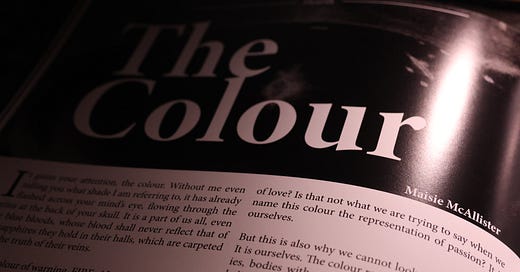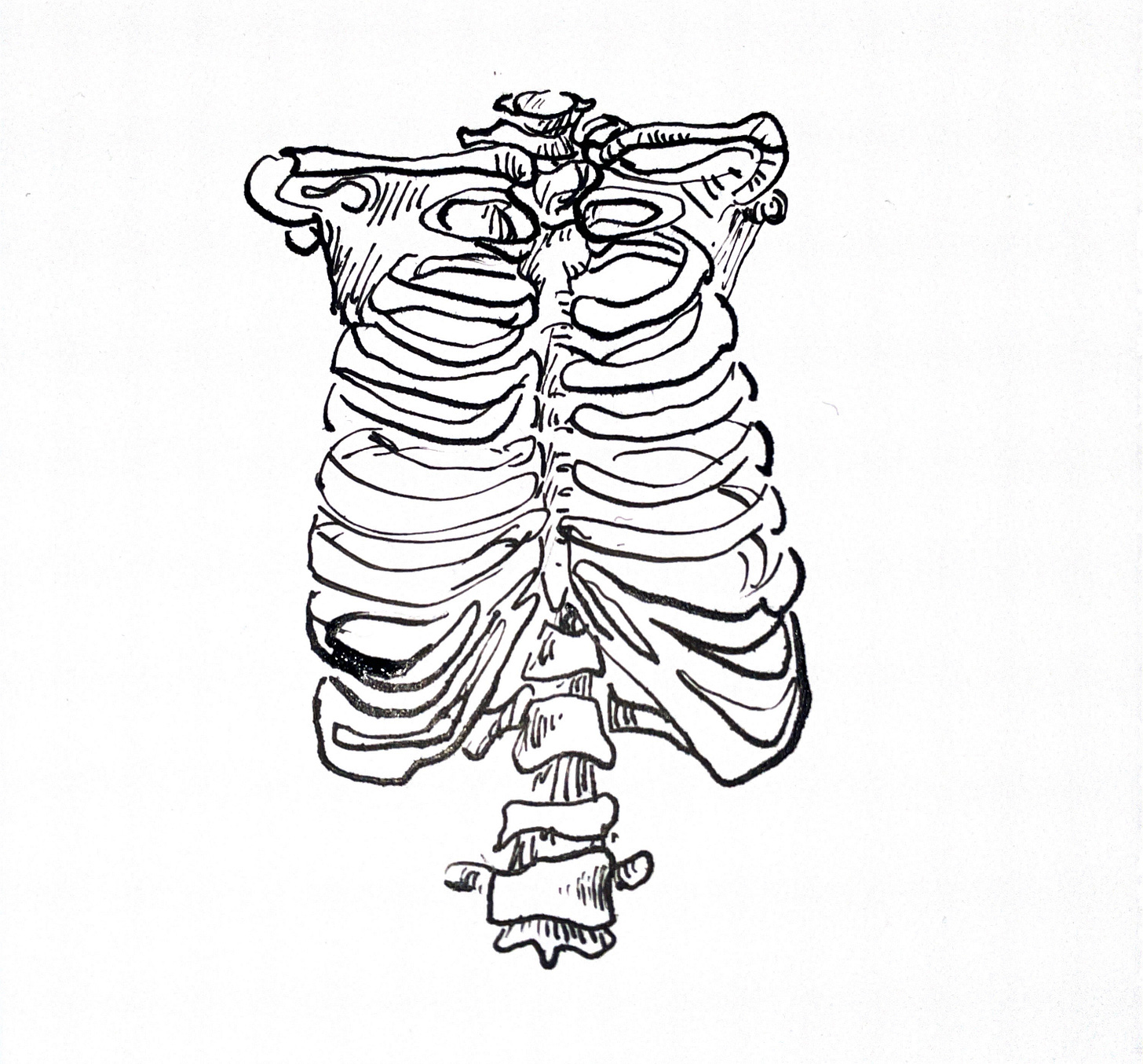It gains your attention, the colour. Without me even telling you what shade I am referring to, it has already flashed across your mind’s eye, flowing through the veins at the back of your skull. It is a part of us all, even the blue bloods, whose blood shall never reflect that of the sapphires they hold in their halls, which are carpeted with the truth of their veins.
It is the colour of warning. FIRE, ALARM, STOP. It catches us just before we fall into danger, reminding us of the weakness of our flesh. The flesh it also colours. It warns us and saves us and represents all that we fear, all we must fear.
Love has somehow intertwined itself with the colour. Perhaps it is because it is the colour of our hearts that sit pulsing, beating between our lungs. Our lungs constrict when we leap into love (for no one truly ever just falls gently). But we have mistaken this taking of breath for a breaking of the heart, the heart made of the strongest of muscle, its threads compacted in order to beat and beat and beat and beat until it stops. Is it because the heart is what keeps us alive that we connect it with love? If I took a blade to my chest, showing you the colour, let you watch as it trickled upon my skin and hardened against the oxygenised air, reached in with clean fingers (soon to be stained), and take out the organ of ‘love’, would you see love? Would you not instead be disgusted by my pulsing flesh, the mass I grew myself? Is it not simply just myself? Isn’t that what we mean when we call the heart the centre of love? Is that not what we are trying to say when we name this colour the representation of passion? It is ourselves.
But this is also why we cannot look at it for too long. It is ourselves. The colour reminds us we are but bodies, bodies with consciousness which have made us believe we are more. Bodies that are kept moving by sheer will and centered by the planet’s gravity, not our own. Bodies that can break and bleed and bend into contortions with the sound of bones crackling and veins popping. We say these bones, our skeleton, are within us when in truth, we are within the skeleton. We are not the heart, the colour, or the body. We are the other lighter organ that floats within the skull. All we are, as people, is this mass of blood, nerves, and muscle which bobs in a fluid. The mass, which can never forget the colour, is the reminder of its lack of power. It cannot stop our pain, it cannot save our breakable bodies, even if it can comprehend it.
It is the colour of life, for without it, we begin to rot. Our eyes bulge, our skin yellows, then blackens with the loss of life, the loss of the colour. Throughout their lives, girls become adjusted to it, see it coming from themselves in floods for days and perceive it with no fear. For how can you fear something which means life, which means birth, which means that you are human? None of us come into this world clean, no. We enter the air covered in it, horribly so, stained by it no matter how much the nurses rub at our skin, and yet our mothers cradle us close as soon as we scream at the realisation of our existence, letting the colour rub onto themselves, as it is theirs too.
It is also violent, the colour. Your armour breaks, and it pours out of you, onto you, onto them, onto the earth, until you have no more to pour. It shows its shades not only with the screams of birth but with the screams of cuts, stabs, and bruises. It surrounds the screams of pain throughout our lives. The bruise with all its colours of black, purple, blue, green and yellow hides the colour from our eyes. The bruise is the trapped colour beneath our thinning layer of skin, the veins have popped, exploded and burst, the pain has been felt, but the bruise hides its true dark shade and so we do not fear. It is our skin which protects us from seeing too much of it. Our thin layer of cells which have already died weeks before we feel them, view them, present them to the world. When the skin fails, when we are
cut open for all to see, that is when we cry and scream and beg to have the colour taken away from our sight, to never have to see it again.
But without it, what would we be? It is danger, fear, joy, life, death, birth and pain. It is the evidence that we exist. It is the reality that we die. In all its mess and all its disgust, it is still everything.
RED.




